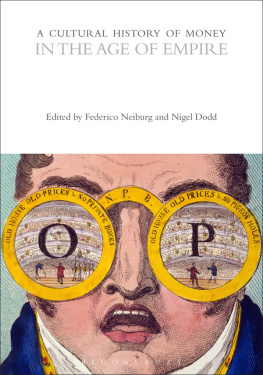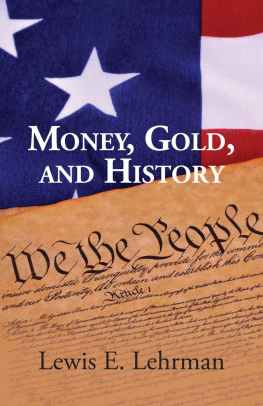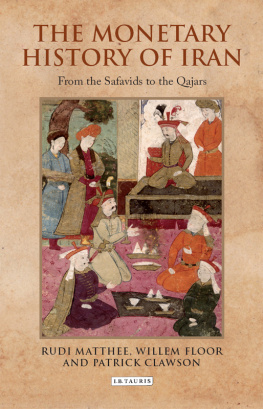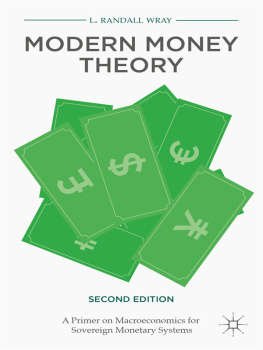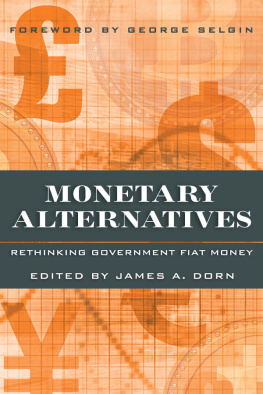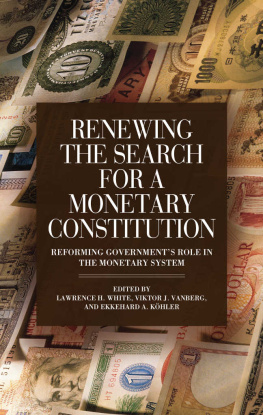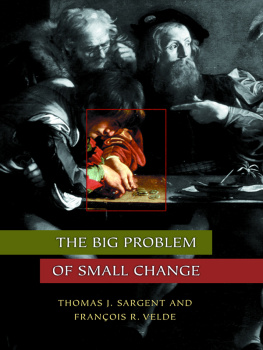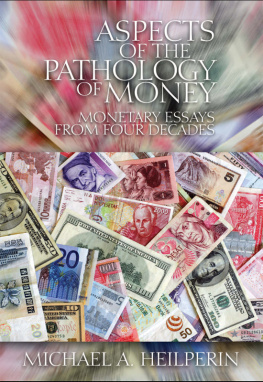Second Edition
Newly Revised and Enlarged
The True
Gold Standard
A Monetary Reform Plan without
Official Reserve Currencies
How We Get from Here to There:
From World Financial Crisis to Monetary Order
by Lewis E. Lehrman
Charts and Tables by John D. Mueller
Selected publications by
Lewis E. Lehrman or sponsored by
The Lehrman Institute
The Atlantic Alliance and Its Critics
edited by Robert W. Tucker and Linda Wrigley
Balance of Power or Hegemony: The Interwar Monetary System
edited by Benjamin M. Rowland
China: American Financial Colony or Mercantilist Predator
by Lewis E. Lehrman
The Dollar Problem and Its Solution
by Lewis E. Lehrman
Gold in a Global Multi-Asset Portfolio
by Lewis E. Lehrman
Lincoln at Peoria: The Turning Point
by Lewis E. Lehrman
Monetary Policy, the Federal Reserve, and Gold
by Lewis E. Lehrman
Money and the Coming World Order
edited by David Calleo (First Edition)
and Lewis E. Lehrman (Second Edition)
The Nuclear Debate: Deterrance and the Lapse of Faith
by Robert W. Tucker
Oeuvres Compltes de Jacques Rueff
edited by Emil-Maria Claassen and Georges Lane
The Politics of International Debt
edited by Miles Kahler
Protectionism, Inflation, or Monetary Reform: The Case for Fixed Exchange Rates and a Modernized Gold Standard
by Lewis E. Lehrman
The Purposes of American Power: An Essay on National Security
by Robert W. Tucker
U.S.-Japanese Economic Relations:
Cooperation, Competition, and Confrontation
edited by Diane Tasca
For more information about the author, Lewis E. Lehrman,
or the work of The Lehrman Institute,
please visit www.LehrmanInstitute.org .
To keep abreast of the latest on The True Gold Standard ,
please visit www.TheGoldStandardNow.org
where additional information, breaking news, history, and research on monetary policy, economics, and
the gold standard may be found.
2012 Lewis E. Lehrman
All rights reserved. Not to be distributed or reproduced without consent.
For Louise.
For my children and my childrens children.
For James Grant and John Mueller.
For every American whose freedom, prosperity, and security depend on a stable dollar.
Let them inherit a stable monetary standard worthy of a free people.
Let them embrace the gold standard, the least imperfect rule-based monetary order.
In memoriam: Jacques Rueff
If the gold standard could be reintroduced, we all believe that the reform would promote trade and production like nothing else, but also stimulate international credit and transfers of capital to the places where they are most useful. One of the greatest elements of uncertainty would be suppressed.
John Maynard Keynes
Commercial Manchester Guardian
Reconstruction Supplement
April 20, 1922
Summary of the
Monetary Reform Plan
America and the world need monetary reform. Indeed, they need a twenty-first century, international gold standard. The gold standard i.e., national currency convertibility to gold is the simple, proven, global monetary standard by which to transmit reliable price information worldwide. Unlike manipulated, floating, paper currencies, the true gold standard a dollar defined in law as a specific weight of gold exhibits the optimum, impartial, networking effects characteristic of the electronic age of reasonably transparent, global standards.
America should lead in the age of monetary reform by unilateral resumption of its historic constitutional monetary standard namely, the gold dollar. Unilateral resumption of the gold standard means that the United States dollar will be defined by Congress in federal statute as a certain weight unit of gold as the dollar was so defined from 1792-1971. The Treasury, the Federal Reserve, and the banking system will be responsible for maintaining the statutory gold value of the United States dollar.
All financial claims on banks and government banking agencies, chartered or supervised under federal law, that are payable in dollars shall be redeemable in gold at the statutory rate without restriction. Dollar demand deposits (e.g., checking accounts) will be redeemable in gold upon demand, but other dollar claims at maturity. Along with customary banknotes and bank checking account deposits, both convertible to gold at the statutory parity, Americans will be free to use gold and authorized, mint-issued, gold coins as money without restriction or taxation. The Treasury and authorized private mints will provide for the minting of legal tender gold coins. The Board of Governors of the Federal Reserve or any successor institution serving in a similar capacity, and all banks chartered or supervised by the U.S. government, or any one of its agencies, will be obliged by law to sustain the statutory, dollar-gold parity and to redeem in gold, upon request, all Federal Reserve notes, all banknotes, and demand deposits.
From 1792 until 1971, the dollar was defined in law as a specific weight unit of gold (and/or silver). As required by Article I, Section 8 of the U.S. Constitution, Congress should again establish by statute, after due deliberation, the sustainable gold value of the dollar; that is the convertibility price of the dollar to gold.
To facilitate termination of the unstable, dollar-based, global, reserve currency system and to mitigate the predatory mercantilism and economic disorder engendered by floating exchange rates, American authorities will invite interested nations to a conference to establish a modernized international gold standard not unlike the global arrangements necessary to establish worldwide telecommunications standards. By international gold standard, it is meant that gold not paper dollars, nor any other currency, nor Special Drawing Rights (SDR) would be the primary means by which nations settle their residual balance-of-payments deficits. The gold monetary standard a proven, impartial, non-national, universally acceptable money is the necessary remedy for the defect of unstable, floating, paper currencies and the currency wars they now ignite. An international agreement to establish stable exchange rates would end the exorbitant privilege and the insupportable burden borne by the United States of the global reserve currency system based on the floating dollar. Such an international monetary reform would bring to an end the world financial crisis of alternating inflation, deflation, and unemployment.
In an imperfect world, peopled by imperfect human beings, there can be no perfect monetary system. Nor is the case for gold the case for investment in gold. Based on a prudent consideration of monetary history, it is an argument from principle by which to establish the optimum monetary standard for a stable, growing economic and social order.
By the test of centuries, the true gold standard, without official reserve currencies, is the least imperfect monetary system of history .
Lewis E. Lehrman
April 15, 2012
Preface
This is the third printing of The True Gold Standard: How We Get from Here to There . But it is the first revised edition. Misprints and errors have been corrected. More figures, tables and graphs have been added by my colleague of thirty years, John D. Mueller. Ours has been an enduring collaboration. No one excels John Mueller in painting with statistics and charts, the fundamental political, economic, and social issues of the time. Reading his book, Redeeming Economics , will substantiate this assertion.
To James D. Grant, an all-time great a colleague of over thirty years I am grateful for our work together, for his remarkable writing, for his unstinting public campaign for sound, free market institutions, and for our seamless exchange of ideas on the case for the gold standard.



